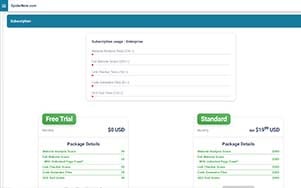How does page speed impact SEO and search engine rankings?
Page speed is a ranking factor in Google's search algorithm, so slow-loading pages may rank lower in search engine results pages (SERPs) compared to faster-loading pages. This can result in decreased organic traffic and visibility for the website. Additionally, slow page speed can negatively impact other SEO metrics such as bounce rate, time on site, and conversion rates, further affecting the website's overall performance in search rankings.
Improving Website Performance through Speed Optimization Techniques
One of the most effective ways to address slow page loading times is through speed optimization techniques. By optimizing the code and structure of a website, it is possible to significantly reduce the time it takes for a page to load.
Some speed optimization techniques include minifying and compressing CSS and JavaScript files, leveraging browser caching, and enabling GZIP compression. Additionally, optimizing images and media files by reducing their size and using the appropriate file formats can also contribute to faster loading times.
By implementing these speed optimization techniques, website owners can improve the overall performance of their websites and ensure that pages load quickly and efficiently.
What is the impact of slow page loading times on website performance?
1. Poor User Experience: Slow-loading pages frustrate users and lead to a negative experience, increasing the likelihood of them abandoning the website and seeking alternatives.
2. Decreased Engagement: Users are less likely to engage with slow-loading pages, resulting in lower page views, time on site, and interaction with content.
3. Higher Bounce Rates: Slow-loading pages have higher bounce rates, as users are more likely to leave the website before it fully loads, especially on mobile devices with limited data or slow connections.
4. Lower Search Engine Rankings: Search engines like Google consider page speed as a ranking factor, so slow-loading pages may rank lower in search results, resulting in decreased organic traffic and visibility.
Improving Website Performance through Optimal Resource Management
In addition to speed optimization techniques, optimal resource management plays a crucial role in improving website performance. This involves efficiently managing the resources used by a website, such as server resources, databases, and external services.
One way to achieve optimal resource management is by reducing the number of HTTP requests made by a website. This can be done by combining CSS and JavaScript files, using CSS sprites for images, and utilizing asynchronous loading for scripts.
Furthermore, reducing the server response time is essential for faster page loading. This can be achieved by using a content delivery network (CDN), which stores website files on multiple servers worldwide, allowing visitors to access them from the nearest server.
By implementing optimal resource management techniques, website owners can ensure that their websites utilize resources efficiently, leading to improved page loading times.
Identifying Common Causes of Slow Page Loading Issues
To effectively address slow page loading times, it is necessary to identify the common causes of such issues. Some common causes include excessive use of large images and media files, unoptimized code and scripts, excessive HTTP requests, and slow server response times.
By identifying these common causes, website owners can take targeted measures to address them and improve page loading times. This may involve optimizing images and media files, minifying and compressing code, reducing the number of HTTP requests, and optimizing server configurations.
Regular monitoring and analysis of website performance metrics can help identify specific areas that need improvement and enable website owners to take appropriate actions.
Optimizing Images and Media Files for Faster Loading
Images and media files are often the main contributors to slow page loading times. Therefore, optimizing these files is crucial for improving website performance.
One way to optimize images is by compressing them without significant loss of quality. This can be achieved using image compression tools or plugins. Additionally, using the appropriate file format for each image, such as JPEG for photographs and PNG for graphics, can also help reduce file sizes.
Furthermore, lazy loading techniques can be implemented to load images only when they are visible to the user, reducing the initial page load time.
By optimizing images and media files, website owners can significantly improve page loading times and enhance the overall user experience.
Minimizing HTTP Requests and Reducing Server Response Time
Excessive HTTP requests and slow server response times can greatly impact page loading times. Therefore, minimizing the number of HTTP requests and reducing server response time are essential for improving website performance.
One way to minimize HTTP requests is by combining multiple CSS and JavaScript files into a single file. Additionally, using CSS sprites for images can reduce the number of image requests made by a website.
Reducing server response time can be achieved by optimizing server configurations, utilizing caching mechanisms, and leveraging content delivery networks (CDNs). CDNs store website files on multiple servers worldwide, allowing visitors to access them from the nearest server, resulting in faster response times.
By implementing these measures, website owners can significantly reduce page loading times and provide a smoother user experience.
Implementing Browser Caching and Content Delivery Networks
Browser caching and content delivery networks (CDNs) are powerful tools for improving page loading times.
Browser caching involves storing certain files, such as CSS and JavaScript files, in the user's browser cache. This allows subsequent page visits to load these files from the cache instead of making new requests to the server, resulting in faster loading times.
Content delivery networks (CDNs) store website files on multiple servers worldwide. When a user visits a website, the CDN serves the files from the nearest server, reducing the distance data needs to travel and improving response times.
By implementing browser caching and utilizing CDNs, website owners can significantly improve page loading times and enhance the overall user experience.










